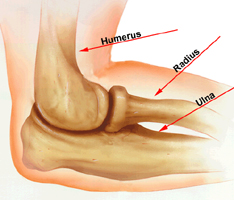Achilles is a common overuse injury that occurs in people of all fitness levels. The causes can be variable, but one factor that seems to be consistent with all cases is stress to the gastroc and soleus muscles in the calf region with irritation and loading at the tendon insertion at the heel bone. This stress may be a result of continued forces placed through the tendon structure from activities ranging from standing, walking, exercise, to recreational activity or sport.
History
The athlete with overuse tendinopathy not ices a gradual development of symptoms and typically complains of pain and morning stiffness after increasing activity level. Pain diminishes with walking about or applying heat (e.g. a hot shower). In most cases, pain diminishes during training, only to recur several hours afterwards.
The onset of pain is usually more sudden in a partial tear of the Achilles tendon. In this uncommon condition, pain may be more disabling in the short term. As the histological abnormality in a partial tear and in overuse tendinopathy are identical. We do not emphasize the distinction other than to suggest that time to recovery may be longer in cases of partial tear. A history of a sudden, severe pain in the Achilles region with marked disability suggests a complete rupture.
Types of Achilles
Midportion Achilles tendinopathy
It is important to distinguish between midportion and insertional Achilles tendinopathy as they differ in their prognosis and response to treatment. We briefly review the pathology of Achilles tendinopathy, list expert opinion of the factors that pre dispose to injury, and summarize the clinical features of the condition. The subsequent section details the treatment of midportion tendinopathy.
Treatment of Midportion Archillies
Archillies tendinopathy Level 2 evidence -based treatments for Achilles tendinopathy include heel-drop exercises, nitric oxide donor therapy (glyceryl trinitrate [GTN] patches), sclerosing injections and micro current therapy (see below), In addition, experienced clinicians begin conservative treatment by identifying and correcting possible etiological factors. This may include relative rest, orthotic treatment (heel lift, change of shoes, corrections of malalignment) and stretching of tight muscles. Whether these ‘commonsense’ interventions contribute to outcome is unlikely to be tested. The sequence of management options may need to vary in special cases such as the elite athlete, the person with acute tendon pain unable to fully bear weight, or the elderly patient who may be unable to complete the heel-drops. As always, the clinician should respond to individual patient needs and modify the sequence appropriately.
Insertional Achilles tendinopathy, retrocalcaneal bursitis and Haglund’s disease
These three ‘diagnoses’ are discussed together as they are intimately related in pathogenesis and clinical presentation.
Relevant anatomy and pathogenesis
The Achilles tendon insertion, the fibro cartilaginous walls of the retrocalcaneal bursa that extend into the tendon and the adjacent calcaneum form an ‘enthesis organ’. The key concept is at this site the tendon insertion, the bursa and the bone are so intimately related that a prominence of the calcaneum will greatly predispose to mechanical irritation of the burs a and the tendon. Also, there is significant strain on the tendon insertion on the posterior aspect of the tendon. This then leads to a change in the nature of those tissues, consistent with the biological process of mechanotransduction.
Treatment
Treatment must consider the enthesis organ as a unit, isolated treatment of insertional Tendinopathy is generally unsuccessful. For example, Alfredson’s pain, full heel-drop protocol (very effective in midportion, tendinopathy) only achieved good clinical results in approximately 30%ofcases of insertional tendinopathy. Patients with more than two years of chronic insertional tendinopathy, sclerosing of local neo vessels with polidocanol cured eight patients at eight -month follow-up.
Other Causes of pain in the Achilles region
Achilles bursitis is generally caused by excessive friction, such as by heel tabs, or by wearing shoes that are too tight or too large. Various types of rather stiff boots (e.g. in skating, cricket bowling) can cause such friction, and the pressure can often be relieved by using a punch to widen the heel of the boot and providing ‘donut’ protection to the area of bursitis as it resolves. Referred pain to this region from the lumbar spine or associated neural structures is unusual and always warrants consideration in challenging cases.
Clinical perspective
Acute tendon rupture is most common among men aged 30- 50 years (mean age, 40 years); it causes sudden severe disability. Overuse Achilles tendon injuries-tendinopathy may arise with increased training volume or intensity but may also arise insidiously. Because the prognosis for midportion Achilles tendinopathy is much better than for insertion tendinopathy, these conditions should be distinguished clinically. Most textbooks suggest that rupturelim its active plantar flexion of the affected leg- but beware, the patient can often plantarflex using an intact plantar is and the long toe flexors. The condition that was previously called ‘Achilles tendinitis’ is not truly an inflammatory condition and, thus, should be referred to as ‘Achilles tendinopathy” pathology that underlies the common tendinopathy.
Whether you treat an Achilles tendon rupture with surgery or use a cast, splint, brace, walking boot, or other device to keep your lower leg from moving (immobilizing your leg), after treatment it’s important to follow the rehabilitation program prescribed by your doctor and physical therapist. This program helps your tendon heal and prevents further injury. http://www.alliancephysicaltherapyva.com/



